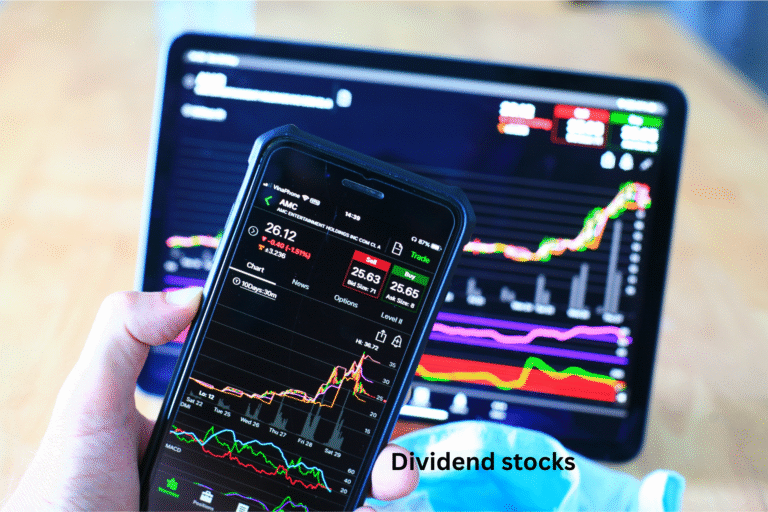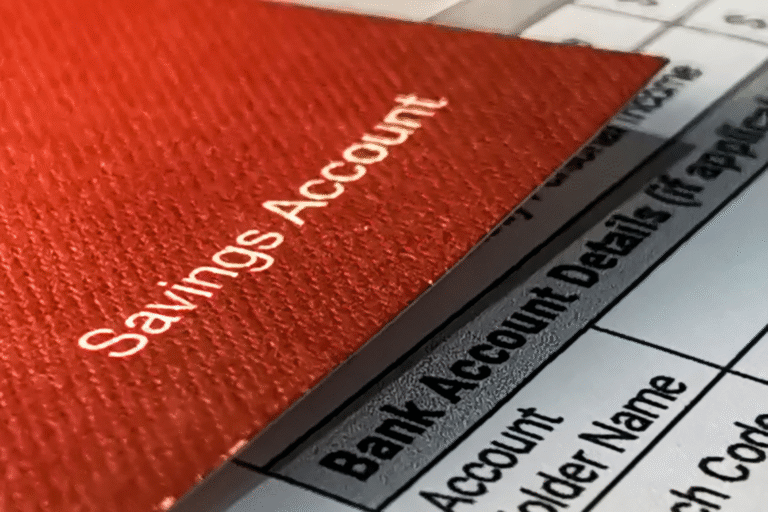How to Start Investing with $100: Beginner’s Guide to Building Wealth
Countless people believe that to invest, you have to be wealthy—that you need thousands of dollars to buy stocks, funds, or other types of assets. That was true long ago when brokerages had large minimums and charged hefty fees. But now, thanks to technology, you can begin with as little as $100.
It’s not about the amount of your initial investment, but instead the habit of investing consistently. Over time, even small investments can turn into significant wealth. In this informational piece, we will look at:
- Why investing $100 makes sense
- The best ways to invest your first $100
- The tools, apps, and accounts that you can use
- The common mistakes to avoid that beginners make
- How to compound small amounts to help build long-term wealth.
By the end, you’ll see that your $100 isn’t just pocket change—it’s the foundation of your financial future.
Why Start with Just $100?
Some individuals are reluctant to start investing with small amounts, as they think it will not matter. However, this is why investing $100 is a formidable starting point:
1. You Derisk
Investing with small amounts is a less daunting experience, as you are not risking any real capital. By investing just $100, you can learn without the fear of losing thousands.
2. You Create a Habit
Wealth does not build overnight; it builds from habits. Starting with just $100 creates the habit of investing.
3. You Experience Compounding Growth
Even $100, if invested and left alone, will compound and grow. If you add on top of that, your returns can grow exponentially.
4. You Get Real Experience
Reading about investing is not the same as investing. If you put your first $100 in the market, you will actually experience the ups and downs of the market for yourself.
5. You Prove to Yourself That You Can
The hardest part of investing is getting started. Once your first $100 is invested, you can add more, as it seems easy to do.
1. Define Your Investing Goals
Before you start investing, identify what you want to achieve with the money you plan to invest. Your objective to invest determines where you should invest.
- Retirement (20 + years away): For example, investing in long-term index funds or ETFs is a great risk-return choice.
- Wealth accretion (10+ years): Growth stocks, growth ETFs, or even real estate crowdfunding.
- Learning experience (1- 3 years): Consider buying a single stock or even a fractional share of a stock.
- Safety and savings (1 – 3 years): Consider investing in a high-yield savings account, Certificate of Deposit, or savings bond.
2. Select a Suitable Account
To invest your $100, you’ll need an account. Here are some great, beginner-friendly accounts in the U.S.:
1. Online Brokerage Accounts
Fidelity, Charles Schwab, Robinhood, and Vanguard have platforms that allow you to buy stocks, ETFs, and mutual funds. Many of these accounts even offer fractional shares now, allowing you to own “part of” a very expensive company like Amazon or Tesla, while only spending $100.
2. Robo-Advisors
If you’re looking for truly hands-off investing, then you may also want to consider a robo-advisor like Betterment or Wealthfront for investing. These retail services will automatically invest $100 or more into diversified portfolios based on your risk tolerance.
3. Micro-Investing Apps
Apps like Acorns and Stash allow you to invest as little as $5. They will round up all your purchases and invest that spare change for you. If you want to invest a small amount of money without thinking about it, this is an option you may want to use.
4. Retirement Accounts
Finally, if you’re investing for a long time period, you may want to start with an IRA (individual retirement account). Even putting in $100 can start compounding tax-free.
3. Where to Invest Your $100
So, once you have opened an account, where should your first $100 go? Here are a few of the best options for beginner-friendly investments.
Fractional Shares of Large Companies to Start
You likely can’t wait until you have $300 or so to buy one share of Apple – buy now $100 with transporting the fraction share to start investing. Fractional shares allow you to.
Exchange Traded Funds (ETFs)
An ETF is a collection of many stocks that allows for instant diversification. Some of the most popular ETFs include:
- S&P 500 ETFs (SPY, VOO, IVV) – Provides exposure to 500 large U.S. companies.
- Total Market ETF (VTI, SCHB) – This ETF exposes you to the whole U.S. market.
- Thematic ETFs – Focus on similar ideas, like clean energy, AI, healthcare, etc.
Dividend Stocks
With dividend-paying companies, you earn both the appreciation of the stock price and receive regular payments. $100 isn’t enough to receive dividends yet, but each time you reinvest, you are building momentum.
Index Funds
Like ETFs, index funds track the market. Some brokers will let you invest small dollar amounts as well. Index funds are low-cost, diversified investments, and perfect for novices.
Bonds or Savings products
If you really want zero risk, consider putting $100 in a U.S. Treasury bond, CD, or high-yield savings account. You won’t earn as much, but you will keep your money safe and stable.
4. Automate And Keep Contributing
Your first $100 is just the start. The real power comes whenever you make this investment your habit.
- You can easily set up automatic deposits of $20, $50, or $100, for example, every month.
- You’re enabling yourself to dollar-cost average—meaning you’ll buy at set intervals, regardless of the price.
- Reinvest dividends, such as after one year, allowing your money to compound faster.
Here’s an example:
- You invest $100 today.
- You add $50 every month.
- After 20 years, with an average investment return of 8%, you’ll have contributed a total of $12,000 and have it grow to over $30,000.
But it’s not about the amount; it’s about the consistency.
5. Avoid Common Beginner Mistakes
Starting with a small amount is helpful, but you still have some traps to avoid:
- Don’t chase after stocks that are “hot.” You don’t want to gamble away your $100 on meme stocks or the hottest trend.
- Don’t ignore the fees. It may not feel like much, but small fees erode a small account. Go with a lower-cost fund.
- Don’t concentrate a large part of your money in a single company’s stock. Be aware of funds like ETFs that you can use to balance your risk.
- Don’t expect to be rich overnight. Investing takes time, period.
- Don’t panic and sell everything just because the market goes down. The market ebbs and flows. Stay the course and adopt a long-term mindset.
How $100 Can Grow Over Time?
Let’s take a look at the growth of small amounts of money through compounding.
- $100 invested once at 8%, for 20 years = $466
- $100 invested + monthly $50 contribution, at 8%, for 20 years = $30,000+
- $100 invested + monthly $100, at 8%, for 20 years = $60,000+
That’s the real power of investing, and of consistency. What seems insignificant now can later change your life.
Best Apps and Tools to Start with $100
Here are some of the best platforms to use in 2025:
- Robinhood – Commission-free trades, fractional shares
- Fidelity – Trusted brokerage with zero minimums
- Charles Schwab – Great for ETFs and long-term investors.
- Vanguard – Principal in low-cost index funds.
- Acorns – Micro-investing using spare change.
- Stash – Beginner-friendly and educational.
- Betterment / Wealthfront – Robo-advisors who do everything.
Tips to Turn $100 into Long-term Wealth
- Think Long-term – Avoid short-term trading until you’re prepared to lose it.
- Diversify early – With $100, you can still use ETFs to spread risk.
- Reinvest everything – Dividends + contributions = compounding faster.
- Educate yourself – Learn the basic principles of investing as you go.
- Increase contributions – Increase your investment as your income grows.
FAQ’s
Can you really invest with just $100?
Yes. Thanks to fractional shares and apps, you can invest less.
Is it worth investing $100?
Yes. The earlier you start, the more time your dollar has to compound.
Where should I put $100 right now?
For beginners, it is smarter to start with a broad ETF like the S&P 500.
What if I need the money in a short time?
If a short time is your timeline, before considering stocks, think about saving accounts or bonds.
Conclusion
You don’t need to be wealthy to invest. You can start with $100 in an account, fractional shares, or ETFs. What is most important is that you start and develop the habit of investing consistently.
In 10, 20, or 30 years from now, your small start will turn into something significant. So instead of putting it off until you “have enough” to begin, start today. Your first $100 may be the first step toward your financial freedom.







